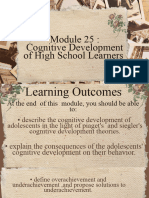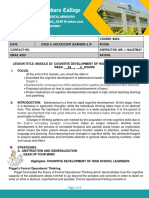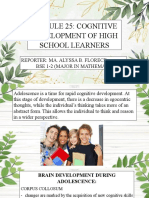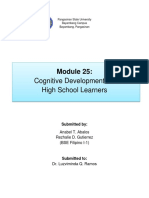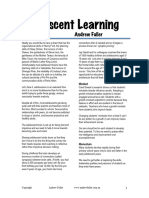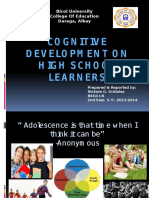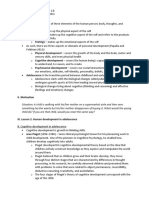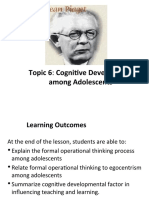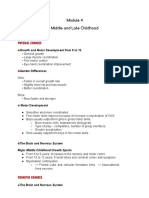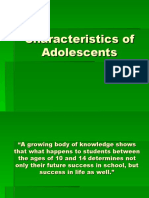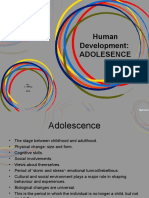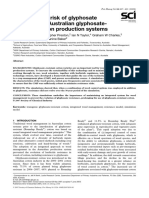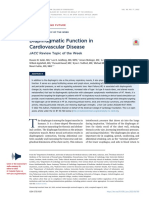0% found this document useful (0 votes)
20 views7 pagesHandouts Group 5 Adolecents
The document discusses the cognitive, physical, and socio-emotional development of adolescents aged 10-19, emphasizing the transition from childhood to adulthood. It highlights key aspects such as formal operational thinking, the impact of brain maturation, and the importance of high-order thinking skills. Additionally, it addresses challenges faced by LGBTQ+ adolescents, the significance of self-esteem, and the role of parents and educators in supporting healthy development.
Uploaded by
rhiezyannmCopyright
© © All Rights Reserved
We take content rights seriously. If you suspect this is your content, claim it here.
Available Formats
Download as DOCX, PDF, TXT or read online on Scribd
0% found this document useful (0 votes)
20 views7 pagesHandouts Group 5 Adolecents
The document discusses the cognitive, physical, and socio-emotional development of adolescents aged 10-19, emphasizing the transition from childhood to adulthood. It highlights key aspects such as formal operational thinking, the impact of brain maturation, and the importance of high-order thinking skills. Additionally, it addresses challenges faced by LGBTQ+ adolescents, the significance of self-esteem, and the role of parents and educators in supporting healthy development.
Uploaded by
rhiezyannmCopyright
© © All Rights Reserved
We take content rights seriously. If you suspect this is your content, claim it here.
Available Formats
Download as DOCX, PDF, TXT or read online on Scribd
/ 7
